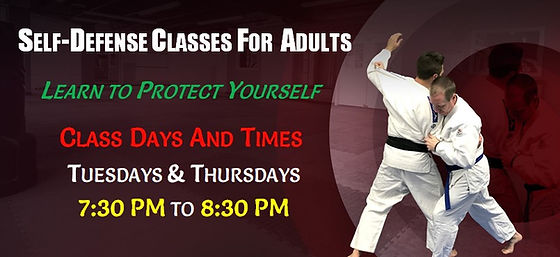
There are many options available if you're interested in becoming a self defence trainer. This article will examine the many options, the cost of training and what the job outlook is for someone interested in becoming self defense trainer. Visit the website of the local self-defense training school to learn more about how you can become one. Being a self defense instructor has several benefits, including the possibility to train students in any subject.
Become a self-defense trainer
There are many choices if you want to learn more about becoming a self defense trainer. You can choose to specialise in martial arts or go generalist. Your skills will then be in demand. The market for self defense training is vast. Earn a full-time living by becoming a self-defense instructor. You might also be interested in helping others become more comfortable with themselves.
Two levels of membership can be obtained through the Combat Objective Battle Ready Applications certification. The first level is for opening your own franchise, while the second level is for providing training in the sport. There are many benefits to the programs, including self-paced training and an online written exam. The second level requires payment for license tactics. This option is great for people who want to train in self-defense and are interested in a career within the sports industry.

Training cost
The cost of self defense training will depend on the instructor, location, and size of the class. For individual lessons, some instructors charge between $40 and $50 per hour. Others charge $10-20 per an hour for group lessons. The first lesson can run up to $180. If you want to return for more lessons, then the instructor might charge you less for your next lesson. For example, a studio apartment for a 90-minute lesson might cost $3,000 or less. You'll then pay approximately $120 for a 90 minute lesson.
Basic courses at Gracie University are $189 An hour of private instruction can cost anywhere from $40-$80. A private class' cost can vary depending upon the instructor, the location and the topics covered. You can also find free online classes such as the SEPS Women's Self-Defense class for those who have a tight budget. It's also possible to find low-cost classes at local police departments, community centers, and college campus safety programs.
Perspectives on the job
Although the job prospects for self-defense trainers are good, there are many hurdles to overcome. There is a high demand for qualified instructors. There are many certifications. Some trainers specialize in a particular style of self defense. Other trainers teach classes in many different areas. Although the outlook for self-defense trainers is good, there is no immediate growth potential. As a self defense trainer, you'll need to be able to adapt to changing needs and expectations.

FAQ
How often should you exercise per week?
It all depends upon how much time you have and what type or exercise you prefer. You should do moderate-intensity aerobic exercise three to five days per week. You shouldn't do too much. It is crucial to exercise regularly in order to reap the full benefits of your workouts.
What exercises are the best?
It really depends on what kind of fitness goals you have. Some people concentrate on endurance activities such running, cycling, swimming. Others love lifting weights or using resistance bars. There are many exercise programs on the market today. Select the one that best suits your needs.
Are There Any Benefits to Yoga?
Yoga has been popular since ancient times. Celebrities and ordinary people love yoga.
Yoga is great because it strengthens your muscles as well as stretches them. Yoga can also help calm your mind and relax you.
Yoga and other forms exercise differ in that yoga is focused on breathing techniques.
To improve your balance and flexibility, you can try different poses.
Can I go to the gym seven days a week?
You can go to your gym seven days a semaine, but not simultaneously. You have to find a time where you can do this without feeling too exhausted and drained.
This will keep you motivated and provide energy for other activities.
It is important to eat right during these times. This will make it so you don't feel tired or sluggish while going to the gym.
Last, make sure there aren't any other things competing with your time. It is possible to skip exercising on school nights if your children are involved.
What does butter do to men?
Butter is one source of saturated fats. This fat is good for hair and skin health, as well as stronger bones.
Vitamin K, found in butter is an antioxidant that prevents bleeding from cuts. Vitamin K and vitamin B work together to prevent any bruising.
Butter is also rich mineral, including calcium and phosphorous. These elements encourage stronger bones.
Butter is not without its flaws. Butter has high cholesterol. Some studies show that consuming too much cholesterol may increase the risk of developing cardiovascular disease.
Also, butter is high in saturated fat, contributing to obesity and increased cholesterol levels.
If you have to have butter, spread it on bread instead of dipping it in soup or salad. Bread absorbs more oil than potatoes or pasta.
Statistics
- An estimated calorie range for moderately active adult males falls between 2,200 to 2,800 calories per day, depending on age. (eatright.org)
- The PRS enabled risk stratification for overall prostate cancer and lethal disease with a four-fold difference between men in the highest and lowest quartiles (HR, 4.32; 95% confidence interval [CI], 3.16-5.89). (pubmed.ncbi.nlm.nih.gov)
- 10 pounds in a month is likely during a lean bulking phase, especially for beginners. (muscleandstrength.com)
- Are You One of the 20% of Guys (mh.co.za)
- According to the American Heart Association, blood pressure should be checked at least once every two years, beginning at age 20. (my.clevelandclinic.org)
External Links
How To
How do I lose weight while working out?
Exercise burns calories through increased metabolism and oxygen consumption.
You'll lose weight safely if you exercise at moderate intensity.
These tips can help you to burn fat while training:
-
Cardio exercises include walking, running, swimming, cycling, running and jogging.
-
Do 30 minutes of exercise three times a week.
-
You can add strength training into your exercise routine if you're looking to lose even more weight.
-
Avoid intense workouts. You can build muscle and not break down muscle tissue.
-
Drink plenty of water during exercise. Water flushes out toxins, and keeps your body properly hydrated.
-
After exercising, you should drink low-fat protein drinks. Protein shakes help repair muscles and boosts energy.
-
Eat smaller meals throughout the day, so you don't feel hungry between meals.
-
Don't skip breakfast! Skipping breakfast can cause you to feel tired and sluggish.
-
Mental health is important. Stressful situations may slow down your metabolism.
-
Keep a positive attitude. Studies have shown that people who are convinced they are overweight gain more weight than those who feel they look attractive.
-
Get enough sleep. It is harder to lose fat if you don't get enough sleep.
-
Always be active. Make sure you get up and move every hour.
-
Maintain a healthy diet. Eat right to feel satisfied and full for longer.
-
Find relaxation techniques. An anxious mind won't allow your body release stress hormones, which can lead to the destruction of muscle tissue.
A balanced diet contains all necessary nutrients for growth and development.
Eat six small meals each day instead of three large ones. This gives your body the time it needs to process what you've eat.
You need about 500 milligrams of calcium daily to maintain strong bones. Calcium can be found in dairy products such as yogurt, fortified soybean beverages, orange juice, cereals, bread, and cereals.
Calcium comes from leafy green vegetables, beans, tofu, nuts, seeds, and cheese.
Your body needs vitamin D to absorb calcium. Vitamin D is found in eggs yolk, fatty fish and fortified foods.
Vitamin E is essential for skin health. Vitamin E can be found in vegetable oils as well as wheat germ oil, peanuts and almonds.
Your body needs zinc for normal immunity function and wound healing. Zinc can be found as a mineral in oysters.
Zinc deficiencies can lead to fatigue, decreased appetite, depression, and reduced immunity.
Sugar intake can lead to insulin resistance which causes blood glucose levels to rise. Insulin resistance leads directly to weight gain.
Insulin resistance is caused by high blood levels of free-radicals. Free radicals refer to molecules that contain unpaired electrons. They can damage cell membranes and other body parts.
Free radicals come mainly from food additives, pesticides, herbicides, preservatives, smoking, air pollution, radiation, chemicals in cosmetics, lotions, and household cleaning supplies.
Free radicals can lead to cancer and heart disease, diabetes mellitus, arthritis, asthma, and premature aging.
A well-balanced diet rich in antioxidants is the best way for you to avoid free radical damage. Antioxidants protect against oxidative damage.
Antioxidant vitamins include Vitamin C (found in citrus fruits), beta carotene (found in carrots, sweet potatoes, spinach, broccoli, cantaloupe, apricots, squash, mangoes, peaches, peppers, tomatoes, cabbage, cauliflower, kale, Brussels sprouts, collard greens, watermelon, and strawberries), and Vitamin E (found in nuts, olive oil, avocados, and eggs).
Selenium, copper as well as manganese and zinc are some other antioxidant nutrients.
Selenium protects cells from free radical damage. Selenium is also found in Brazil nuts.
Copper protects eyes, brain, lungs and red cells. Copper can be found in meat, shellfish, meat, and organ meats.
Manganese is essential for bone structure. Manganese is found as a component of bone structure in brown rice (spinach, bananas), prunes, raisins and oatmeal.
Zinc is essential for normal growth, reproduction, wound healing, and average growth. Zn can be found in lean cuts, white fish, poultry, eggs, and other foods.